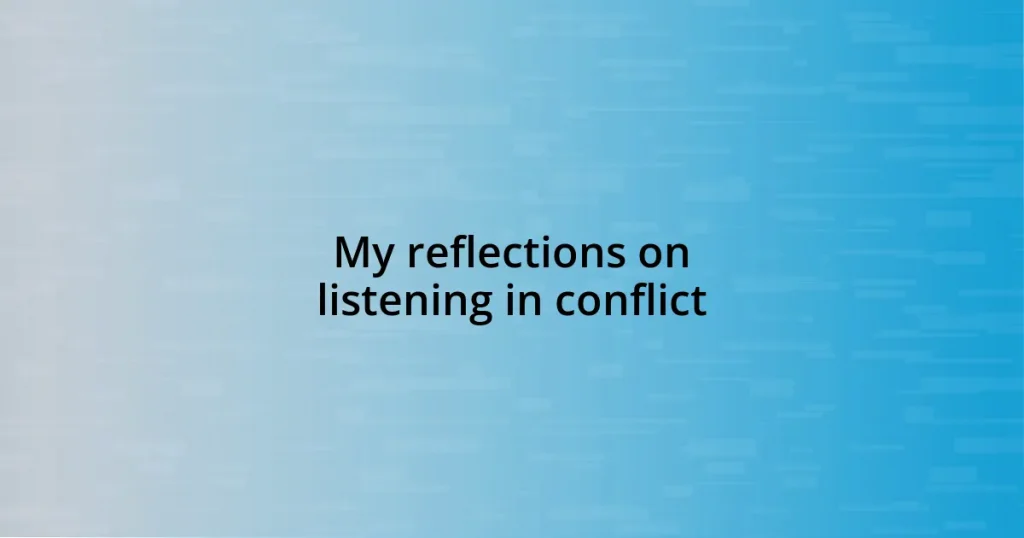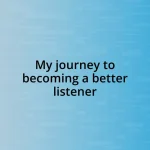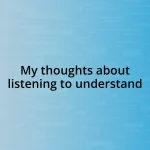Key takeaways:
- Conflict often arises from underlying emotions and unmet needs, rather than just opposing views.
- Active listening fosters empathy, clarifies meanings, encourages openness, and builds trust, transforming misunderstandings into constructive dialogues.
- Practical techniques for effective listening include reflecting back, asking open-ended questions, and embracing pauses to allow for thoughtful responses.
- Listening with vulnerability and an open mind can shift conflicts into opportunities for collaboration and understanding, ultimately leading to more effective resolutions.
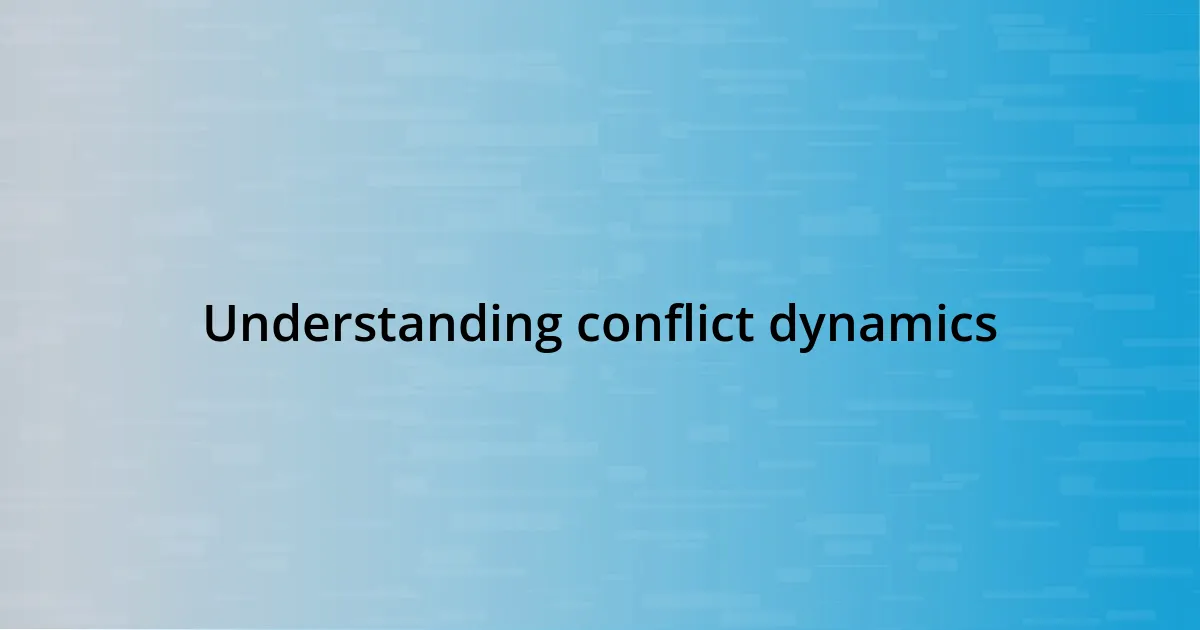
Understanding conflict dynamics
Understanding the dynamics of conflict can feel like navigating a maze. I remember a time when a small disagreement escalated dramatically during a group project. Why does something seemingly trivial turn into a major row? It’s often rooted in underlying emotions and unmet needs that we sometimes overlook.
Many people mistakenly believe conflict is simply about opposing views. In my experience, it goes much deeper. For instance, when I found myself at odds with a colleague, it wasn’t just about the differing opinions—it was tied to feelings of miscommunication and vulnerability. Recognizing what truly fuels conflict can be a game changer in how we approach resolution.
I often ask myself—what is driving this conflict on both sides? Understanding the motivations, whether fear, insecurity, or past experiences, can reveal much about how to navigate these tense moments. The more we listen and empathize, the more we unravel the complex layers of conflict, allowing for healing and progress rather than just resolution.
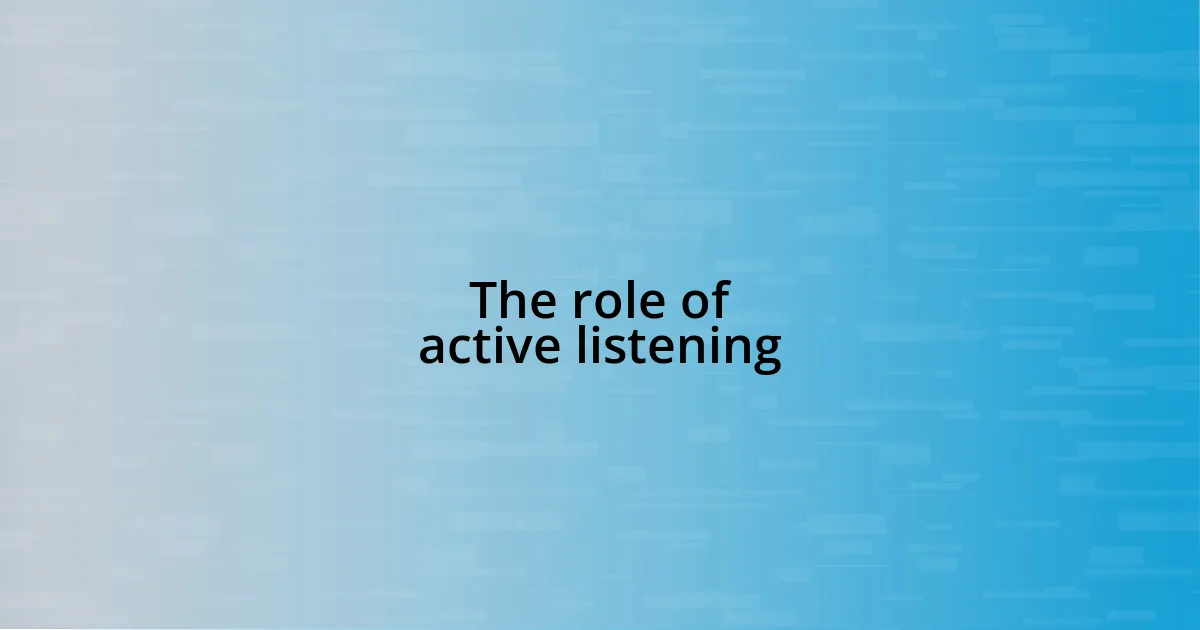
The role of active listening
Active listening plays a pivotal role during conflict, transforming misunderstandings into opportunities for connection. I recall a heated discussion I had with a family member. Instead of responding defensively, I chose to listen fully, which allowed me to uncover the real worry beneath their anger. By truly paying attention—not just to the words, but to the emotions behind them—I was able to address their concerns more effectively.
- Fosters empathy: When you actively listen, you create space for understanding the other person’s perspective, which can soften emotions.
- Clarifies meanings: It serves to clarify what’s being said, reducing assumptions that often fuel conflict.
- Encourages openness: Listening creates a safe environment where both parties feel heard, allowing for a more productive dialogue.
- Builds trust: Consistent active listening builds trust over time, making future conflicts easier to manage.
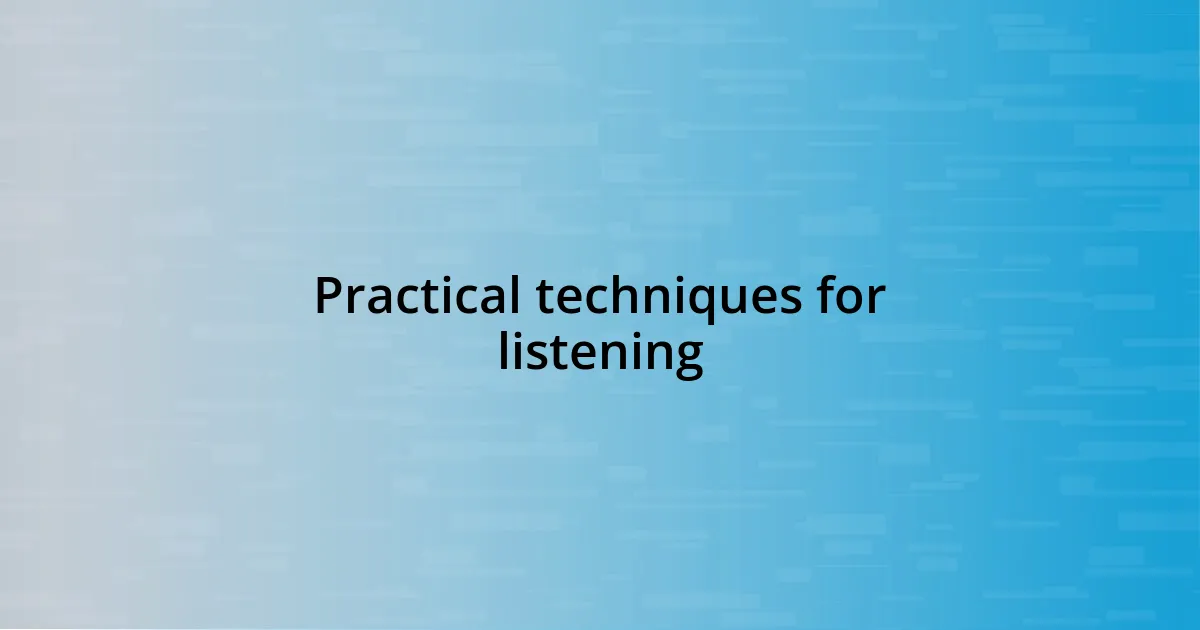
Practical techniques for listening
One practical technique I find incredibly effective is reflecting back what you’ve heard. When I last facilitated a conflict resolution session, I would paraphrase the speaker’s words before responding. This simple act doesn’t just show respect; it demonstrates genuine engagement and understanding. It’s amazing how much calmer the atmosphere becomes when both parties feel validated.
Another technique is to ask open-ended questions. For example, instead of saying, “Do you think that’s fair?” I might ask, “What are your thoughts on how we can move forward from this?” In my experience, this invites deeper conversation and promotes problem-solving rather than just reacting with emotions. I’ve seen firsthand how one well-placed question can shift the whole tone of a discussion.
Lastly, I’ve learned to embrace pauses in conversation. When tensions are high, I tend to feel the urge to fill silence with my thoughts. However, I’ve discovered that allowing brief pauses gives everyone space to reflect and gather their thoughts. This often leads to more thoughtful and meaningful dialogue, creating room for understanding rather than defensiveness.
| Technique | Description |
|---|---|
| Reflecting back | Paraphrasing the speaker’s words to confirm understanding and build rapport. |
| Open-ended questions | Encouraging broader conversation by asking questions that require more than a yes or no answer. |
| Embracing pauses | Using silence as a tool to allow time for reflection and thoughtful responses. |
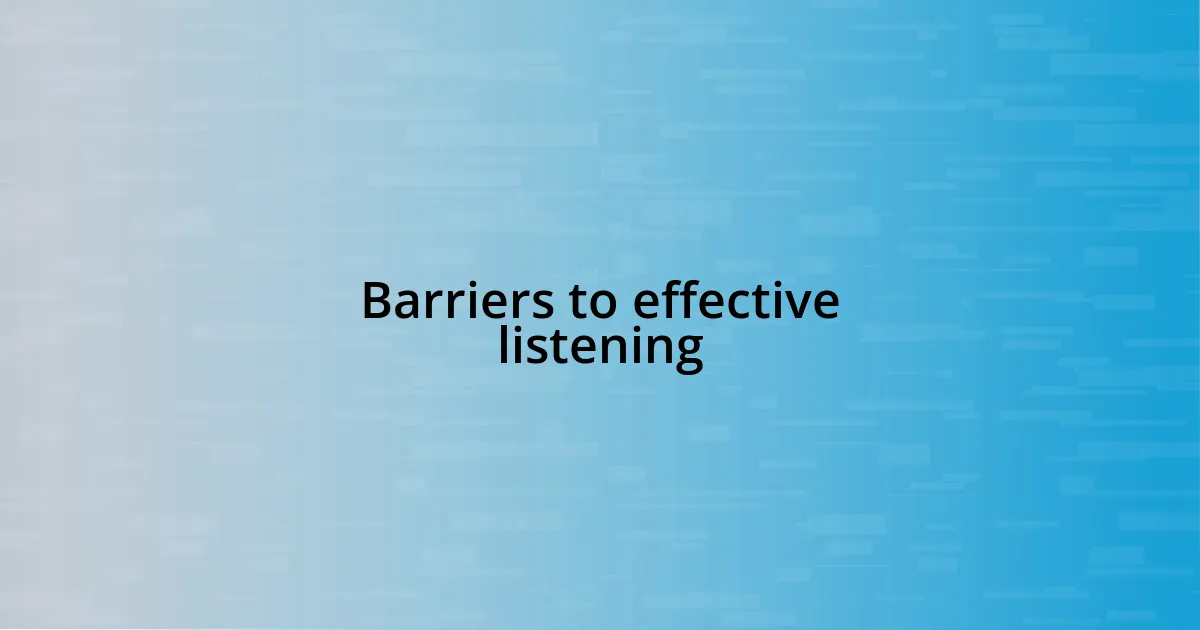
Barriers to effective listening
Listening effectively can be surprisingly challenging, often hindered by various barriers. For instance, I’ve encountered moments where internal distractions clouded my ability to fully engage with someone speaking. Maybe you’ve felt that, too—that nagging thought in your head or the buzzing of your phone that pulls your focus away. It’s frustrating because it means we’re missing out on vital insights that could reshape our understanding in a conflict.
Another barrier is emotional overload. In one particularly heated argument, my emotions spiked, and I struggled to remain objective. I found myself focused more on my feelings than on truly hearing the other person. Isn’t it ironic how our emotions, meant to inform us, can instead cause us to shut down in crucial conversations? This experience taught me that managing our emotional responses is key to breaking through the noise and really connecting.
Lastly, biases and preconceptions can significantly distort our listening. I remember entering a discussion with a colleague, already convinced of my stance while dismissing their viewpoint out of hand. It’s a common human tendency, isn’t it? But reflecting on that encounter, I realized that such biases can blind us to others’ experiences and insights, which could ultimately lead to a more effective resolution. Instead, embracing an open mind can foster genuine dialogue and understanding.
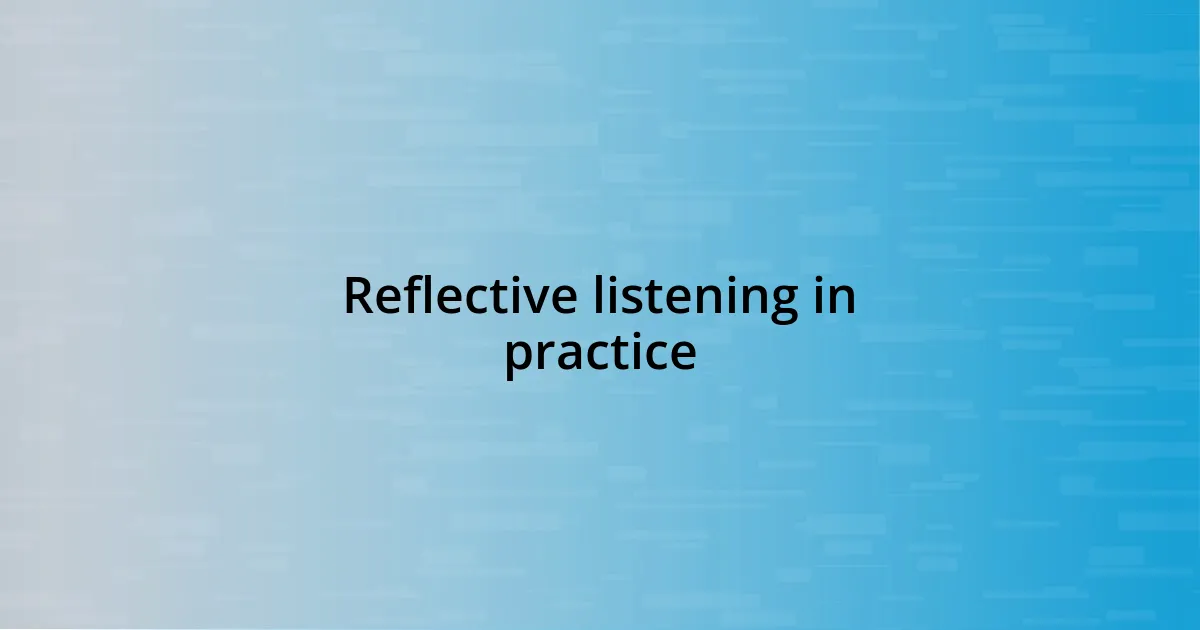
Reflective listening in practice
Reflective listening in practice truly shifts the dynamics in a conversation. I recall a time when a colleague and I faced an intense disagreement during a project review. Instead of jumping into my own defense, I took a step back and mirrored their concerns. “So, you feel the project lacks clear objectives,” I said. The relief in their eyes was palpable; it was as if I had opened a floodgate for constructive dialogue.
I’ve also noticed how tone plays a significant role in reflective listening. While working with a team member who was visibly upset, I consciously matched my tone to convey empathy. I said, “It sounds like you’re really frustrated with the current situation.” This subtle choice in delivery made a world of difference. It encourages an atmosphere where honesty prevails, inviting them to share more, rather than retreat behind walls of defensiveness.
Additionally, the power of summarization can’t be understated. After a lengthy exchange, I often find it helpful to summarize key points before moving on. Just last week, in a meeting, I recapped by saying, “So far, we’ve discussed three potential solutions to this issue.” Not only does this clarify the conversation, but it reinforces to everyone involved that their contributions matter. Have you ever felt the weight lift when your thoughts are acknowledged? That’s exactly what reflective listening can accomplish.
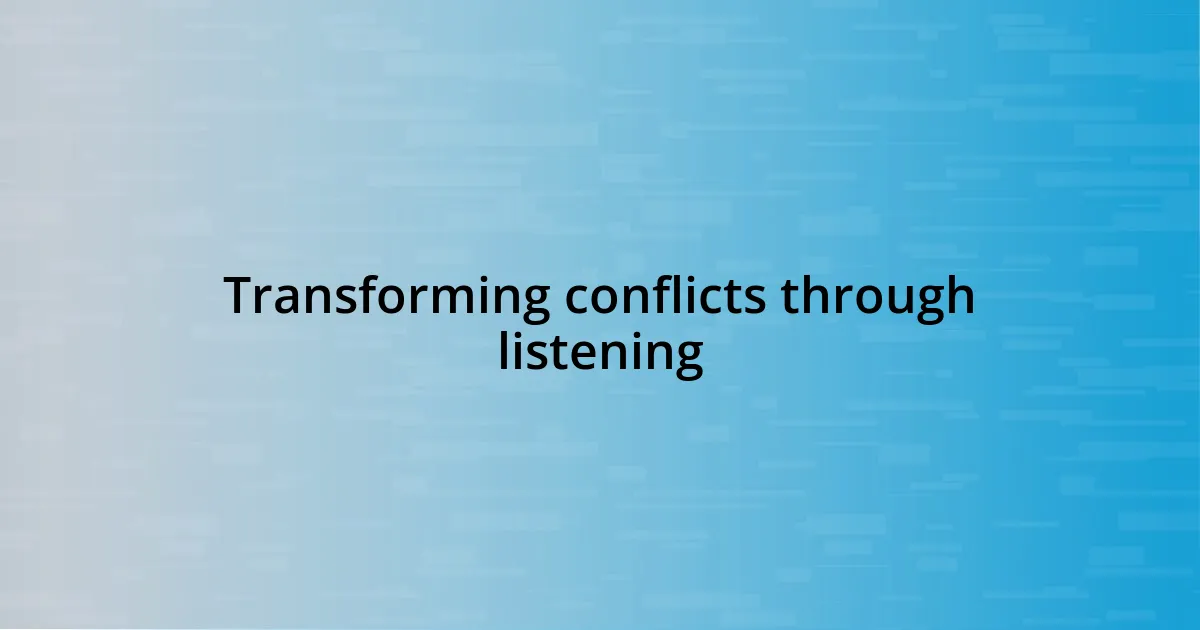
Transforming conflicts through listening
Listening can be a powerful tool for transforming conflicts into opportunities for understanding. I remember a situation where a heated discussion with a friend escalated quickly. Instead of interrupting, I took a deep breath and let them express their feelings. As they shared their perspective, I noticed how the tension started to dissolve, making way for a deeper connection. Isn’t it amazing how simply pausing to listen can shift the atmosphere from hostility to openness?
One thing I’ve learned is that truly listening requires vulnerability. During a difficult conversation with a family member, I had to let go of my urge to defend myself and focus instead on their emotions. I found myself saying, “I can see why you feel that way,” and in that moment, I felt a shift within myself as well. Listening isn’t just about hearing words; it’s about tuning into the feelings behind them. Have you ever experienced this? When you fully engage with someone else’s feelings, it can create a bridge of empathy that allows for real healing.
Moreover, active listening invites a collaborative mindset. I recall a brainstorming session where tensions were high, and everyone seemed stuck in their positions. I proposed we take a moment to listen to each other’s concerns without interruption. Surprisingly, as each person shared, we began to identify common goals and shared frustrations. This shift from competition to collaboration opened the door to creative solutions we hadn’t even considered before. It reminds me that sometimes, it’s not what we say but how well we listen that can lead to transformation.
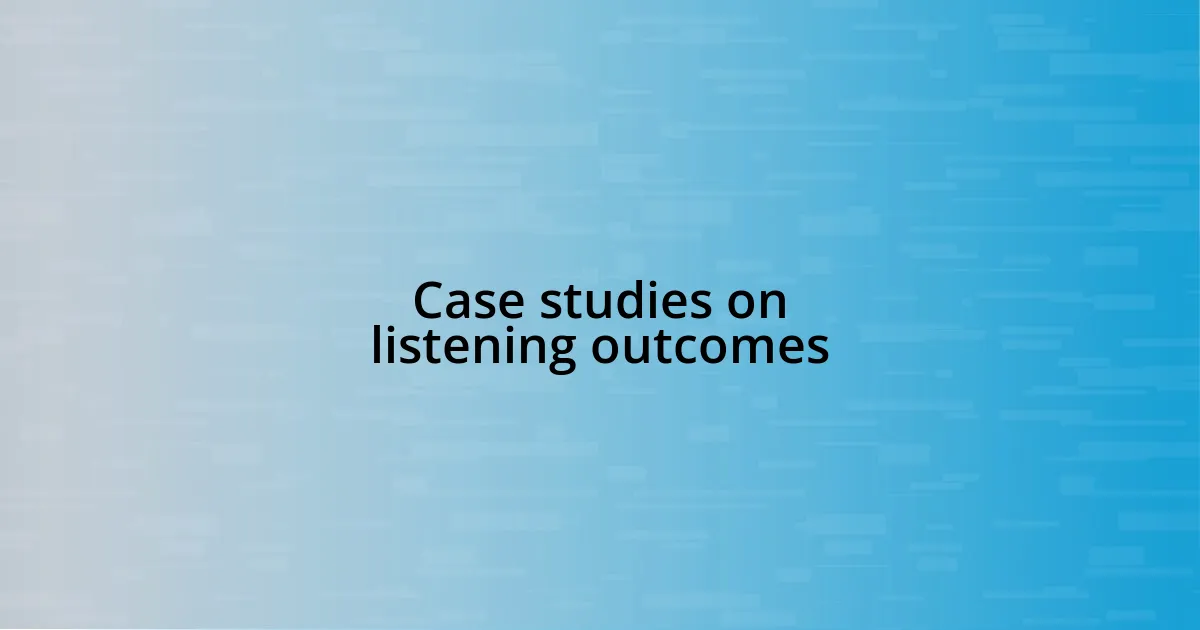
Case studies on listening outcomes
There are fascinating case studies that highlight the impact of listening outcomes in conflict situations. In a workshop I attended, participants were divided into pairs to role-play a conflict scenario. One participant intentionally employed active listening techniques, while the other did not. Astonishingly, the pair with the active listener reported a significant reduction in tension and a more constructive resolution. It really made me reflect on how listening can directly change the dynamics of communication.
Another compelling example comes from my experience in a mediation setting. A couple was struggling to address their persistent arguments. As I guided them through the mediation process, I encouraged them to listen sincerely to each other without judgment. The moment one person acknowledged, “I didn’t realize that my focus on our financial issues was making you feel unheard,” the atmosphere lightened. Isn’t it incredible how a simple acknowledgment can pave the way for healing and understanding?
Finally, I recall a conflict resolution study involving teams in high-pressure industries. It revealed that teams that practiced reflective listening techniques experienced a 40% decrease in misunderstandings and a notable boost in morale. These outcomes not only led to greater efficiency but also fostered a culture of respect and openness. How often do we overlook the transformative power of simply lending an ear in our rush to solve problems? It’s a profound realization that listening, when done thoughtfully, can really create a ripple effect in conflict resolution.











